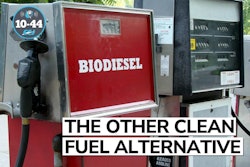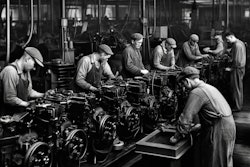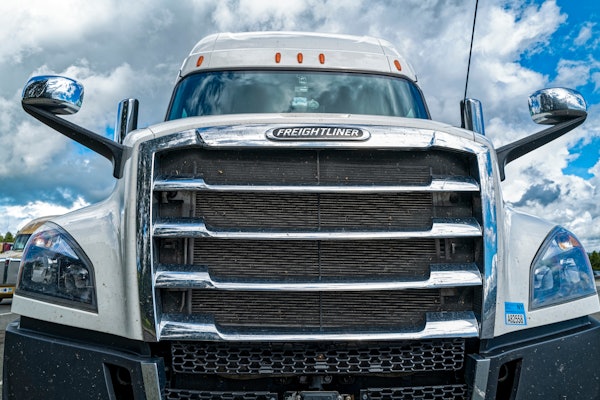I read blogs from self-proclaimed futurists. When I was a kid, science fiction writers owned that space; big names like Isaac Asimov, Arthur C. Clarke, Ray Bradbury, H.G. Wells, Jules Verne, and many others. They did a pretty good job of innovating future solutions, many of which we have now become dependent on.
A few years ago, when NACFE embarked on writing about the zero-emission future, we realized that the speed of innovation was so great that talking about the future as something distant was inappropriate, so we decided to call it Emerging Technologies. Bundled in this was battery electric vehicles, fuel cell vehicles, robotic vehicles, connected vehicles, and a range of other rapidly developing technologies.
We missed forecasting burning hydrogen in an internal combustion engine, but have since corrected that omission.
In August 2017, Stifel Transportation Equity Research asked me to predict trucking’s future in a presentation to potential freight industry investors. This was a few months before the media sensation of electric tractors was fueled up by Cummins, Tesla and others revealing their prototypes in public.
I talked about how new technology generally adds cost to existing product baselines in trucking. That added cost has to be paid for by offsets in other areas, such as reducing driver cost; increasing the payload per vehicle; increasing freight miles per year per unit; increasing pricing; and reducing other operating costs.
For example, the pursuit of automation ultimately could convert the cost of the human driver in the truck to the cost of an automated driver in the truck. This is a bit of a shell game, moving costs around, replacing OpEX with CapEX with endless nuances, such as adding resources for maintenance, software, inspections, etc.
Increasing the effectiveness of drivers is a big opportunity area; more hours actually rolling in a loaded truck. Drivers endure endless delays and detention time at warehouses and shipping yards. J.B. Hunt estimated in 2016 that they only drive on average about 6.5 hours a day, not the 11 permitted, because of delays and inefficiencies at loading docks and yards. Drivers mostly do not get compensated for this wasted time as the wheels are not turning. Improving the utilization of drivers by much improved scheduling and tracking of vehicles clearly is an opportunity to do more with less.
Electrification of vehicles has the potential to reduce out-of-route miles for a large segment of urban and regional trucking. I used to watch gas stations near urban delivery warehouses get inundated with medium-duty trucks filling up early in the morning or late in the afternoon. Many companies do not have on-site fueling and rely on commercial gas stations to fuel Class 2b-6 trucks. NACFE found in Run on Less Electric in 2021 that in New York, getting an urban delivery truck refueled could take more than an hour dealing with traffic to find a fuel station.
On-site, overnight charging of vehicles means taking advantage of the already parked vehicle time to refill the energy, adding no out-of-route miles or wasted driver time. Even creating en route charging at warehouses could help since drivers spend a lot of time waiting at warehouses already, why not help them with recharging and range extension?
One of the greatest opportunities I discussed at the Stifel event was increasing freight hauled per mile. While companies like Walmart have engaged product manufacturers to reduce dunnage and water content in products to allow more useful freight to be carried, the bigger opportunity is to let drivers pull more freight. Long combination vehicles are legal in Canada, Australia, Mexico and on some U.S. routes, but not universally. Trucks are the only transport mode in the U.S. which have not benefitted from being allowed to increase in payload capacity. We’ve seen containerships, trains and airplanes significantly grow in capacity, while crew sizes have been minimized. Yet trucks have not seen any allowances for increases, except under special permits, waivers or on specific roads.
I forecasted that vastly improved driver assistance technologies going into both cars and trucks would significantly improve the safety around trucks, and asked why can’t trucking take advantage of that improved safety margin to allow more freight per driver per trip. If safety automation of cars improves with automatic braking, lane detection, improved following distances, etc. why can’t trucking and the public benefit from that? Trucks carrying more freight actually could reduce the number of independent vehicles on the roadway, which inherently reduces the risk of accidents.
The topic of long combination vehicles (LCVs) gets very little traction in government or the public, yet quietly, progress is being made in Oregon, Nevada, Idaho and Washington, where higher freight weights and LCVs can be frequently seen on the highways. Take a drive through these states and you will see doubles and triples. Count the number of axles on the vehicles and you’ll see a number more than five on many tractor-trailers.
I talked in the Stifel presentation that the paradigm of the 53-foot trailer pulled by a human-driven tractor needs to be challenged. Electrification and automation can combine to provide much longer trailers with cab-less tractors, or even powered trailers, while still meeting existing length and weight rules. More cube and less tare weight means more paid freight while staying inside 80,000 lbs. 5-axle limitations. Companies like Einride have started down this technology road.
Here’s the part where I get to go from “emerging” to “futuring:" What if fusion power becomes a reality and electricity is no longer dependent on fossil fuels, or water levels in dams, or the availability of wind and sun, or subject to weather conditions? What if room temperature superconducting cables can become a reality? What if cost-effective solid state batteries with increased energy density happen? What happens if we combine all that with automated and interconnected LCVs?
Predicting the future is always easier once you get there. A book I picked up at the U.S. Air and Space Museum years ago titled 12 Seconds to the Moon (ISBN: 0-9611634-0-2) reflects on how the Wright Brother’s first controlled powered flight in 1903 was only 12 seconds, and within a short 66 years, in 1969, we had landed on the moon. The future can come pretty fast if we make it happen.












